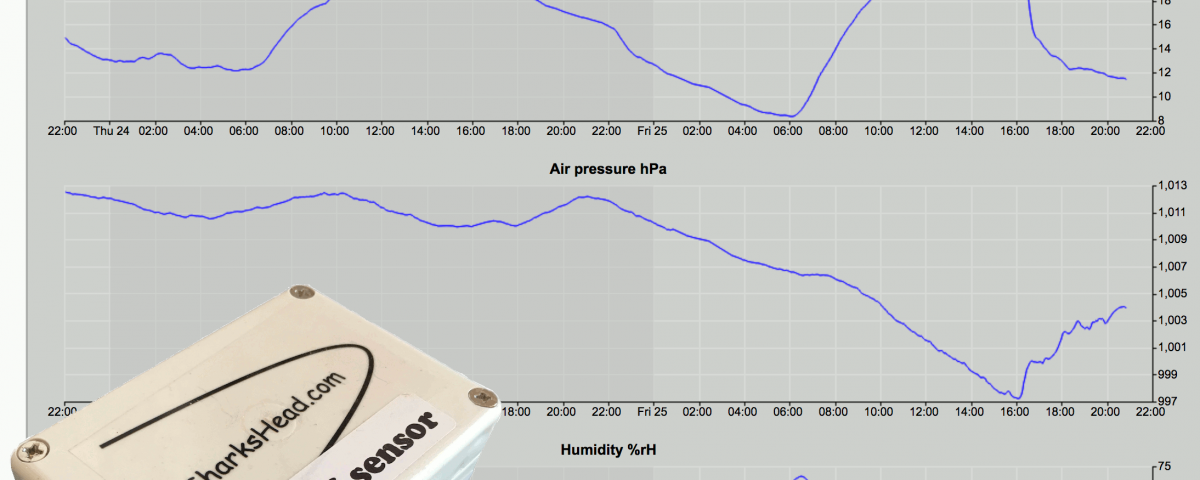“Peace of mind with Shark’s Head’s monitoring system”
Shark’s Head, developer of open-source hardware and software for wireless microcontroller routing solutions, announces their new series of wireless sensors.
Using industry standard MQ-series gas sensors as well as the BME-series environmental sensors by Bosch, all components are individually lab-tested.
The environmental sensor module reports ambient air temperature, pressure and relative humidity back to the central hub called headquarters, or HQ.
The other, independent module features the MQ-2 sensor which detects dangerous accumulation of explosive gases. As an additional feature not found in similar products, the thresholds for notifications and alarms can be adjusted by the user in order to minimise false positives and also detect a possible deterioration of the sensor e.g. due to silicone vapours. This feature together with the graphical view of historical data means the gas sensors can last much longer than the standard replacement interval of one year. Several of these modules can be placed in relevant spots close to the gas bottles or near the galley. The devices are also spark-proof.
All sensor modules work independently and report back to a central server where thresholds for alarms can be modified by the user. It’s possible to deploy a large number of identical sensors around the vessel, e.g. in the engine room, owner cabin, crew quarters or the galley. The fully automatic and dynamic network routing system allows deployment even where sensors cannot receive the radio signals from the central hub directly.
This central module contains two radios that can be used license-free world-wide: one to talk to the sensors and one WIFI interface for the graphical web-based user interface. It also hosts the database which allows easy analysis of years of locally accumulated sensor data. The flexible web interface eliminates the need for installing and updating a separate app.
An optional service by Shark’s Head allows notifications and alarming via SMS and email. This would require an Internet router provided by the user.
By default the system provides its own WIFI access point (AP) yet can make use of an existing WIFI router where it would act as another client.
Installation is very easy as the components only need 12V power while all communication happens wirelessly. There is no need to drill a sizable hole in the dashboard as everything is controlled via the web interface. As an addition, the central controller has visible and audible alarms built-in.
The web user interface is multi-lingual and supports metric as well as imperial based units. It is tamper-proof as it can allow guests to view the graphs but requires a password to change the settings. The wireless communication between the components is authenticated and encrypted, as well.
Power consumption for the complete standard system is less than 3W or 0.2 Amperes at 12V.
For more information, please visit our website at https://www.sharkshead.com or contact us at info201@sharkshead.com or via phone, Skype, Zoom or Facebook.
